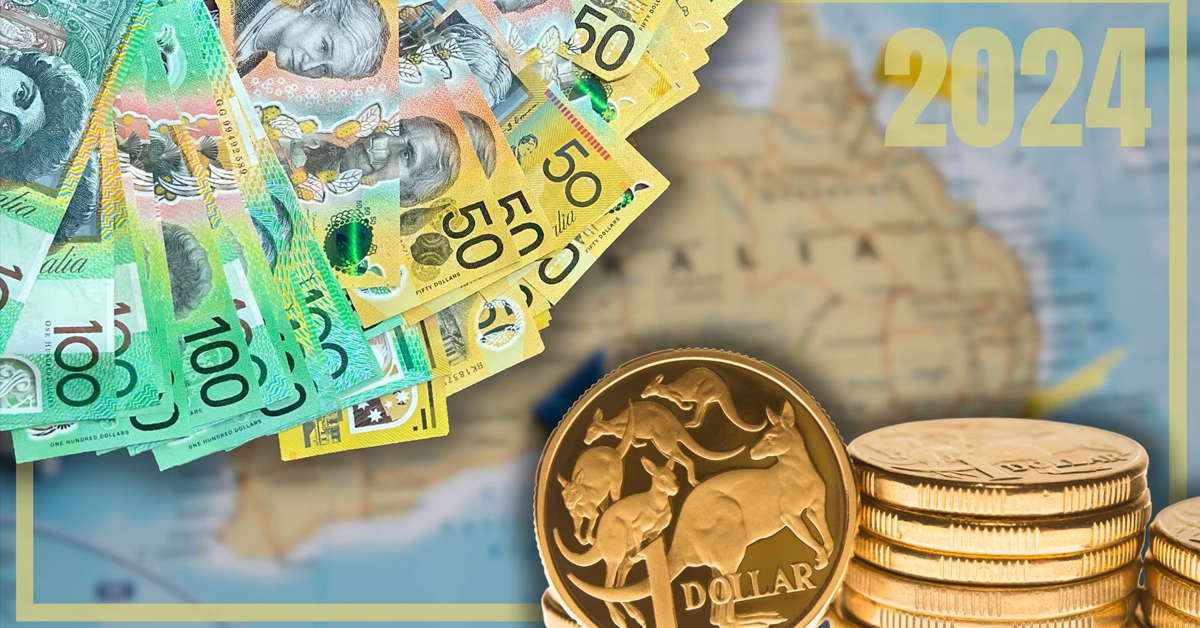Australian Dollar Strengthens as China Prepares Capital Injection for Top Banks
The Australian Dollar (AUD) regained some of its recent losses against the US Dollar (USD) on Thursday, benefiting from divergent monetary policy stances between the Reserve Bank of Australia (RBA) and the US Federal Reserve. The AUD also received a boost as China, Australia’s largest trading partner, announced a new round of economic stimulus measures.
Earlier this week, the RBA kept its Official Cash Rate (OCR) unchanged at 4.35%, providing support to the Australian Dollar. RBA Governor Michele Bullock indicated that rates would remain steady for the time being. This contrasts with the US Federal Open Market Committee (FOMC), which recently cut the federal funds rate by 50 basis points, lowering it to a range of 4.75% to 5.0%. According to the CME FedWatch Tool, there is about a 50% chance that the Fed will cut rates by an additional 75 basis points to a range of 4.0%-4.25% by the end of the year.
Market attention now turns to the upcoming release of final US Gross Domestic Product (GDP) figures for the second quarter (Q2), expected later in the North American session.
Market Overview: AUD Supported by Central Bank Divergence
China announced plans to inject over CNY 1 trillion into its largest state-owned banks, which are struggling with shrinking margins, declining profits, and rising bad loans. This capital infusion would be the first of its kind since the 2008 global financial crisis, further bolstering market sentiment for the AUD.
The Reserve Bank of Australia’s Financial Stability Review in September 2024 reaffirmed the resilience of Australia’s financial system. However, the report raised concerns about stress in China’s financial sector and a limited response from Beijing. Domestically, a small but growing number of Australian mortgage holders are falling behind on payments, though only about 2% of owner-occupier borrowers are considered at high risk of default.
Meanwhile, the Commonwealth Bank of Australia (CBA) anticipates that the RBA will downgrade its consumption forecasts in November. This revision, along with rising unemployment and inflation in line with CBA’s expectations, could set the stage for the RBA to implement rate cuts before the year ends.
Fed Governor Adriana Kugler also weighed in, expressing her support for the Fed’s recent 50 basis point rate cut. She indicated that further rate cuts might be warranted if inflation continues to ease.
Geopolitical Developments and Economic Forecasts
Australian Treasurer Jim Chalmers is scheduled to visit China to strengthen economic ties. “Given our reliance on China’s economic stability, it is crucial to engage with key Chinese officials in Beijing,” Chalmers said.
JP Morgan recently advised investors to monitor commodity prices and bond yields in light of China’s stimulus proposals. The bank highlighted that China’s new measures could stimulate global growth and reduce recession risks, though it cautioned about potential reinflation risks.
Australia’s Monthly Consumer Price Index (CPI) rose 2.7% year-over-year in August, down from the previous 3.5% rise and slightly below market expectations of 2.8%.
In response to economic challenges, People’s Bank of China (PBOC) Governor Pan Gongsheng announced a 50 basis point reduction in the Reserve Requirement Ratio (RRR). Additionally, the central bank lowered the seven-day repo rate from 1.7% to 1.5% and reduced the down payment requirement for second homes from 25% to 15%. On Thursday, the PBOC also cut the one-year Medium-term Lending Facility (MLF) rate from 2.30% to 2.0%, following a previous reduction in July.
Technical Outlook: AUD/USD Tests Key Levels
The AUD/USD pair is trading near 0.6830 on Thursday. A technical analysis of the daily chart suggests the pair has fallen below an ascending channel pattern, potentially signaling a weakening bullish trend. However, the 14-day Relative Strength Index (RSI) remains above 50, indicating that bullish sentiment persists.
The AUD/USD could test resistance at 0.6860, the lower boundary of the ascending channel. If the pair returns to the channel, it may resume its upward trend toward 0.6960. On the downside, support is found at the nine-day Exponential Moving Average (EMA) at 0.6809, with stronger support at the psychological level of 0.6700. A break below this level could lead the pair toward a six-week low of 0.6622.











